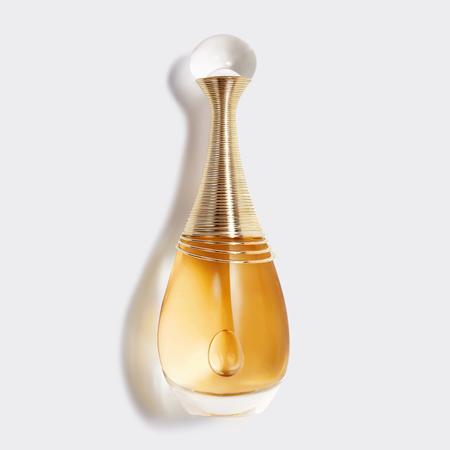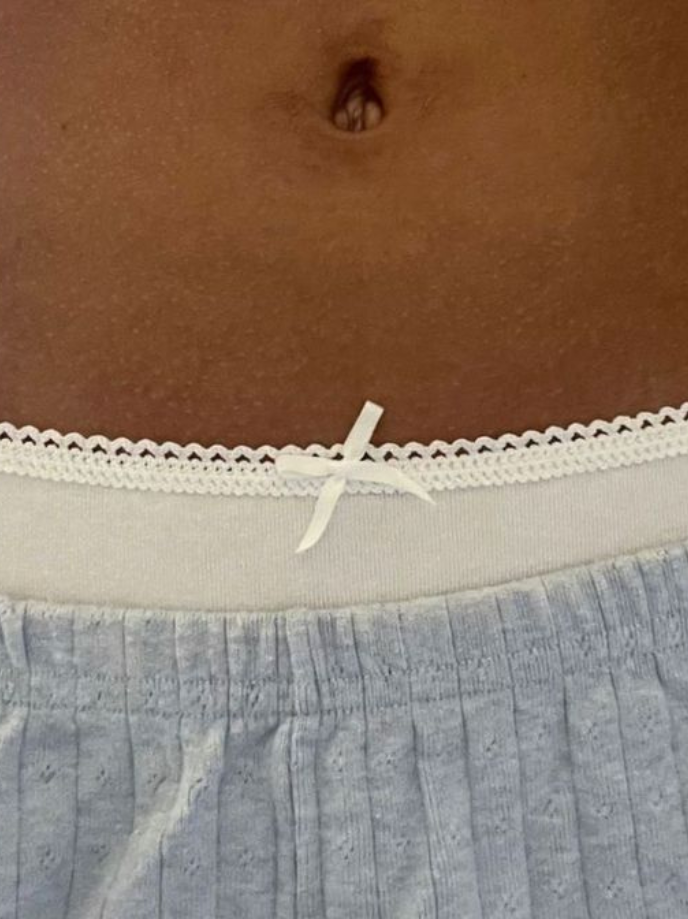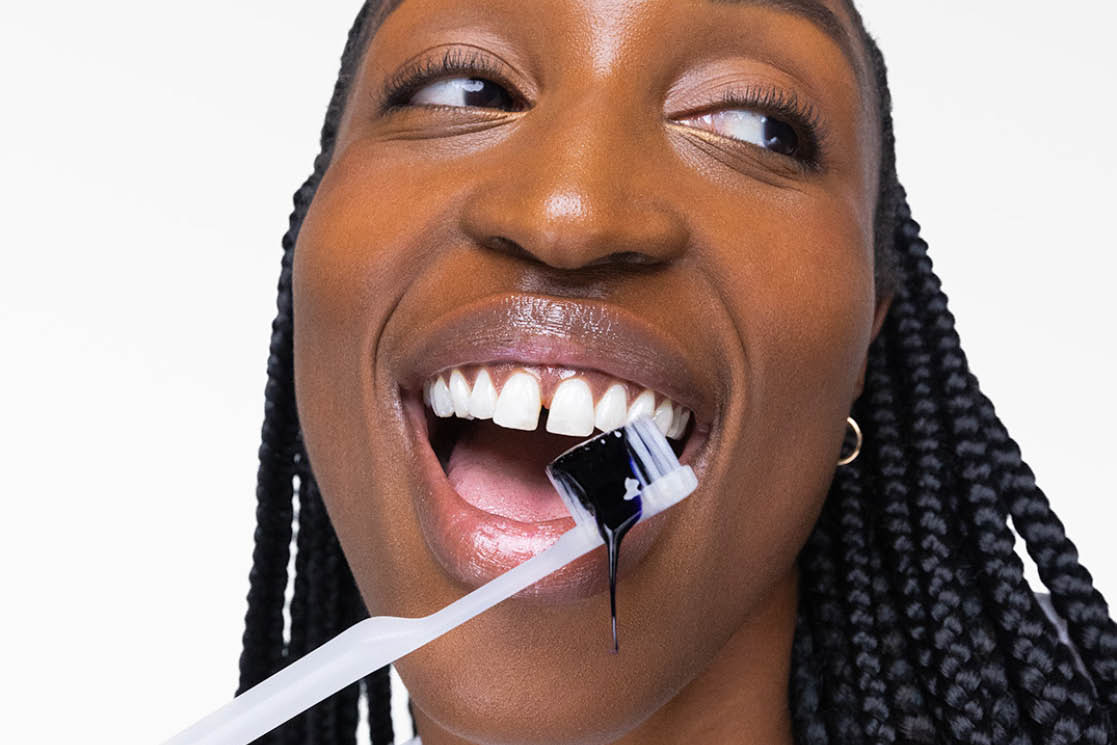Everything You Need To Know About Endometriosis
Despite its prevalence there is a huge lack of understanding regarding endometriosis.
It can be overwhelming and disheartening to be told you have a disease that has no cure, just as it can to be told that your symptoms are not worthy of further investigation. If you have been diagnosed with endometriosis or suspect you might have it, navigating the path to treatment can be a scary experience. Similarly, if you know someone who has it you will know first hand how debilitating the disease can be; physically, mentally and emotionally.
As hard as the road might be, just know that while there is no cure at present, we are definitely on the right path!
Being afraid of an endometriosis diagnosis is completely normal but there are lots of things you can do to improve your symptoms and quality of life. The most important thing is to educate yourself so you can make confident decisions for your health and manage the condition as best you can.
Naturopathic doctor Lara Briden predicts we’re on the cusp of a big change with endo, which is a huge glimmer of hope. Both diagnostically, with the coming to market of non-invasive testing methods such as blood or saliva tests, and in terms of treatments. Research is now honing in on the fact that endo is a disease of immune dysfunction, not hormone imbalance.
What Is Endometriosis?
- Endometriosis is a whole body inflammatory condition where tissue similar to that which normally lines the uterus grows in other parts of the body, usually in the pelvic cavity.
- Endometriosis is not a hormonal condition. It’s affected by estrogen but is not caused by estrogen or “estrogen dominance.”
- Dr Briden says immune dysfunction is at the heart of what is going on with endometriosis. For example, immune dysfunction is what prevents the immune system from clearing up endometrial lesions.
- We don’t know what causes endometriosis and it can vary from woman to woman. However, a number of risk factors are likely to be involved, some of which are:
- Genetics (family history)
- Nickel allergy
- Epigenetics
- Inflammation from the gut, such as from a bacterial toxin called lipopolysaccharide or LPS. This may be an initiating or driving factor in at least some cases of endometriosis. It’s called the “bacterial contamination hypothesis,” and is explained in this video by Dr Lara Briden.
Who Does Endometriosis Affect?
Researchers from The University of Queensland discovered one in nine Australian women are diagnosed with endometriosis by the time they reach the age of 44. Typically diagnosed amongst women of reproductive age, it can also be diagnosed in women after menopause and girls before their first period.
What Are The Endometriosis Symptoms To Look Out For?
It takes an average of seven years between onset of symptoms to diagnosis. One of the main reasons for this is lack of symptom awareness.
You may not experience pain but instead (or also) have frequent and persistent bloating and/or constipation. This is very common for women with endometriosis. If it impacts your life, it is worth investigating further. All women experience endometriosis differently but the following symptoms are the most common types.
You could have one (or more) symptom and they are not always only present at the time of your period:
- Heavy and painful periods, sometimes debilitating. Painful periods are not normal. Severe period pain is caused by an underlying medical condition so experiencing painful periods is a sign for you to explore further
- Bloating
- Pelvic pain throughout the entire month
- Pain during sex
- Bowel upset (e.g. diarrhoea or constipation)
- Unexplained infertility. Note: not everyone who has endometriosis struggles with infertility
- Pain with urination and other urinary symptoms that may be cyclical (e.g. thrush)
What Are The Main Co-Existing Conditions Of Endometriosis?
Irritable Bowel Syndrome (IBS) and Small Intestine Bacterial Overgrowth (SIBO), which are possible explanations for the bowel symptoms experienced by many women with endometriosis. And according to the bacterial contamination theory of endometriosis (discussed above) may be a driving factor in the immune dysfunction of the disease.
What To Do If You Suspect You Have Endometriosis
- Educating yourself about endometriosis and associated conditions is a great first step:
- Watch this video called Tame the Beast which might help you understand pain. One important aspect to pain is not to fear it as this can cause it to become worse. I know, easier said than done!
- Read some of the blogs Dr Lara Briden posts on her website; whatever resonates with you
- Listen to this podcast with Clinical naturopath Leah Hechtman. Leah has 25+ years of experience as a fertility expert and specialises in treatment of endometriosis
- Watch the film Endo What
- Note down any symptoms you are experiencing. If you are experiencing crippling period pain, do not settle for being told that it is normal. It’s your body telling you something isn’t right. Be confident that you know your body best, and trust that you can become your own health advocate!
- Ask your General Practitioner (GP) for a referral to a gynaecologist who specialises in endometriosis; someone who can assess without surgery. Before you do this, you can also book in to see a pelvic floor physiotherapist who specialises in pelvic pain and can assess whether or not endometriosis could be a reason for your pain and associated symptoms. Medicare offers rebates for physiotherapy appointments.
- If it’s within your means, seeing a clinical naturopath to discuss SIBO and its role in endometriosis would be a huge benefit to your overall healing. If SIBO is treated, you may experience a huge improvement in symptoms.
How Is Endometriosis Diagnosed?
The only way to obtain a 100% definitive diagnosis is to undergo a laparoscopy. If you are undergoing a laparoscopy, the most important thing is to find an ob-gyn who specialises in endometriosis. However, as Endometriosis Australia states, surgery is not always essential as your doctor may diagnose you based on clinical signs during an examination. You obtain a referral for a laparoscopy from your GP. For this reason it is ideal to first have a GP with whom you are comfortable and who knows your history. If you don’t have this, refer to question below.
What If I Don’t Have A GP Or Am Unhappy With Mine?
Do some research into reputable General Practitioners in your area. Read the bios on their website and find someone who resonates with you. Perhaps they are very experienced in the area of women’s health which is a good place to start. Collate your medical records and history and write a list of questions you have for your first appointment. If you feel heard and your GP takes a look at your history and asks you questions, you should have a good feeling about whether or not they are right for you.
What Is In Your Power?
It’s not normal to be feeling consistent debilitating symptoms. Never feel afraid to tell your GP how concerned you are if you suspect endometriosis might be causing you pain or discomfort. Similarly if you are having difficulties falling pregnant, this might be a cause and it is imperative that you talk to your ob-gyn about your concerns.
Clinical Naturopathic doctor Leah Hechtman says in this recent podcast about endometriosis, “As soon as you have an endometriosis cell, its proliferation is something we can control with the things we do. This is important if you have surgery, to prevent it from recurring once it is removed.”
- Obtain a diagnosis
Obtain a diagnosis from a qualified gynaecologist. Before you see your gynaecologist, record your symptoms daily for two to three months so you are armed with information.
- Investigate further
Find out what your personal driver might be for endometriosis: a qualified clinical naturopath or nutritionist can help you identify this. Impaired digestion is a primary example. As Dr Lara Briden says in this video, working on the health of your microbiome can decrease the severity of your endometriosis symptoms
- Dietary changes
Most of the research suggests a diet free of dairy and gluten is important. However, some women can tolerate dairy so it’s about finding what is right for you. This blog post by dr Briden suggests why going strictly gluten free is an important part of treatment. Gluten is not a cause, but definitely a driver. Processed sugars, alcohol and other processed foods won’t do your endo any favours but it’s important not to stress yourself out more by trying to have a perfect diet. Dietary approaches are extremely individualised and it is never a good idea to restrict foods without guidance or understanding as this can lead to other problems.
- Exercise
Exercise doesn’t mean thrashing yourself at the gym! Finding the right type of exercise for your body is essential. It could be one or a combination of yoga, walking, pilates and stretching. Research shows that stretching alone can improve pain. Pelvic yoga specifically can have a huge impact on improving pain and constipation associated with endometriosis. You can speak to any certified yoga practitioner about this and if they do not specialise in it, they will be able to direct you to someone who does. There are also loads of YouTube videos you can explore.
- See a pelvic floor physiotherapist
A pelvic floor physio will help you alleviate pain through abdominal and pelvic floor release. A tight pelvic floor is often a major pain driver in women with endometriosis. Pelvic floor physiotherapy can also help to improve congestion in the pelvic area as well as aid in nervous system down-regulation: when our nervous system is calm, our pain can decrease.
- Meditation
Studies have found that regular meditation can reduce persistent pain. Vedic Meditation teacher Jess Osie says, “One of the leading causes of disease and imbalance in the body is stress. Vedic Meditation is a profound tool that deeply rests the nervous system and we move from a fight-flight state, into rest and digest. Amplified stress and fatigue, amongst other factors, increase the pain response. When the body rests deeply, it’s given a chance to repair, heal and naturally dissolve stress at the root cause. Meditators find through their practice that physical symptoms dissipate, and their capability to deal with life’s demands is elevated through increased adaptation energy and expanded awareness.”
- Remove unnecessary toxins
Hechtman says, “A woman can lower her endometriosis risk and incidents just by changing personal care products.” Therefore, it is important to understand ingredients in these products as they can perpetuate inflammation, which perpetuates endo!
Start to become aware of what is in your skincare and personal care products. Opt for products that don’t use toxic and harmful ingredients. Avoiding this list is a good place to start: parabens, phthalates, PEGs, ethanolamines, chemical sunscreens, synthetic fragrance, BHT and BHA. Bond Clean Beauty has a great guide on their website.
- Incorporate supplements and herbs
Every individual is different and you can save a lot of money by not just buying what Google tells you to buy. Some supplements can make the condition worse so it’s important to work with your doctor or naturopath when choosing the right supplements and microbials for your regimen. Researched immune treatments for endometriosis include zinc, vitamin D, selenium and more.
Conventional Endometriosis Procedures
Surgical Excision:
There is no cure for endometriosis at present, but excision surgery (laparoscopy or laparotomy) can help endometriosis symptoms in some cases. However, even after surgery, endometriosis can grow back in new areas and associated pain can come with it, as well as possible complications. It’s important to speak to your doctor to fully understand the procedures—each case of endometriosis is different and it’s important to look at all your options before committing to a surgical procedure.
Hormonal Birth Control:
If you are considering hormonal birth control it is important to speak to your gynaecologist and be fully educated on the pros, cons and associated side effects. Dr Briden says, “The pill is not a cure for endometriosis however some doctors do imply that. The idea is that suppressing menstruation will suppress the monthly bleeding of the lesions–but such an approach doesn’t suppress the active inflammation that drives the growth of the lesions. And some women get no relief whatsoever. To be fair, contraceptive drugs can (in some cases) suppress lesions and relieve symptoms to some extent. Probably the most effective are the hormonal IUD (levonorgestrel) and the progestin dienogest (Visanne). The least effective are pills like Yasmin or Diane, because of the combination of synthetic estrogen and an anti-androgen progestin (drospirenone or cyproterone)–both which can worsen endo.”
Home Endometriosis Remedies
- Castor oil packs are great for constipation (not when bleeding)
- Rose massage oil on abdomen (can also help to relieve scarring if you have had surgery)
- Pain medication like ibuprofen
- Slow stretching sequence; pelvic pain foundation is a great place to start
- Herbal tea: ginger tea is great for nausea and is also a prokinetic which means it can help move things along. This study done in 2018 showed that chrysin, a compound found in chamomile, suppressed the growth of endometrial cells.
- A warm Epsom salts bath–heat relaxes the pelvic floor muscles
Resources And The Future Of Endometriosis Research
There is still so much to learn about endometriosis and its associated conditions. We encourage you to devote personal time to learning about current naturopathic and conventional treatments. Understanding your possible options means you are prioritising your health and for that you should be proud.
If you are experiencing pain and discomfort, this is a sign from your body that something is not right and that it needs to be investigated. Find a GP who listens to you and does not dismiss your symptoms; this is already a great first step!
Here are some great resources for learning more:
This article is for educational purposes only. Please consult your healthcare professional before starting any individual treatments.
Everything You Need To Know About Endometriosis
Despite its prevalence there is a huge lack of understanding regarding endometriosis.
It can be overwhelming and disheartening to be told you have a disease that has no cure, just as it can to be told that your symptoms are not worthy of further investigation. If you have been diagnosed with endometriosis or suspect you might have it, navigating the path to treatment can be a scary experience. Similarly, if you know someone who has it you will know first hand how debilitating the disease can be; physically, mentally and emotionally.
As hard as the road might be, just know that while there is no cure at present, we are definitely on the right path!
Being afraid of an endometriosis diagnosis is completely normal but there are lots of things you can do to improve your symptoms and quality of life. The most important thing is to educate yourself so you can make confident decisions for your health and manage the condition as best you can.
Naturopathic doctor Lara Briden predicts we’re on the cusp of a big change with endo, which is a huge glimmer of hope. Both diagnostically, with the coming to market of non-invasive testing methods such as blood or saliva tests, and in terms of treatments. Research is now honing in on the fact that endo is a disease of immune dysfunction, not hormone imbalance.
What Is Endometriosis?
- Endometriosis is a whole body inflammatory condition where tissue similar to that which normally lines the uterus grows in other parts of the body, usually in the pelvic cavity.
- Endometriosis is not a hormonal condition. It’s affected by estrogen but is not caused by estrogen or “estrogen dominance.”
- Dr Briden says immune dysfunction is at the heart of what is going on with endometriosis. For example, immune dysfunction is what prevents the immune system from clearing up endometrial lesions.
- We don’t know what causes endometriosis and it can vary from woman to woman. However, a number of risk factors are likely to be involved, some of which are:
- Genetics (family history)
- Nickel allergy
- Epigenetics
- Inflammation from the gut, such as from a bacterial toxin called lipopolysaccharide or LPS. This may be an initiating or driving factor in at least some cases of endometriosis. It’s called the “bacterial contamination hypothesis,” and is explained in this video by Dr Lara Briden.
Who Does Endometriosis Affect?
Researchers from The University of Queensland discovered one in nine Australian women are diagnosed with endometriosis by the time they reach the age of 44. Typically diagnosed amongst women of reproductive age, it can also be diagnosed in women after menopause and girls before their first period.
What Are The Endometriosis Symptoms To Look Out For?
It takes an average of seven years between onset of symptoms to diagnosis. One of the main reasons for this is lack of symptom awareness.
You may not experience pain but instead (or also) have frequent and persistent bloating and/or constipation. This is very common for women with endometriosis. If it impacts your life, it is worth investigating further. All women experience endometriosis differently but the following symptoms are the most common types.
You could have one (or more) symptom and they are not always only present at the time of your period:
- Heavy and painful periods, sometimes debilitating. Painful periods are not normal. Severe period pain is caused by an underlying medical condition so experiencing painful periods is a sign for you to explore further
- Bloating
- Pelvic pain throughout the entire month
- Pain during sex
- Bowel upset (e.g. diarrhoea or constipation)
- Unexplained infertility. Note: not everyone who has endometriosis struggles with infertility
- Pain with urination and other urinary symptoms that may be cyclical (e.g. thrush)
What Are The Main Co-Existing Conditions Of Endometriosis?
Irritable Bowel Syndrome (IBS) and Small Intestine Bacterial Overgrowth (SIBO), which are possible explanations for the bowel symptoms experienced by many women with endometriosis. And according to the bacterial contamination theory of endometriosis (discussed above) may be a driving factor in the immune dysfunction of the disease.
What To Do If You Suspect You Have Endometriosis
- Educating yourself about endometriosis and associated conditions is a great first step:
- Watch this video called Tame the Beast which might help you understand pain. One important aspect to pain is not to fear it as this can cause it to become worse. I know, easier said than done!
- Read some of the blogs Dr Lara Briden posts on her website; whatever resonates with you
- Listen to this podcast with Clinical naturopath Leah Hechtman. Leah has 25+ years of experience as a fertility expert and specialises in treatment of endometriosis
- Watch the film Endo What
- Note down any symptoms you are experiencing. If you are experiencing crippling period pain, do not settle for being told that it is normal. It’s your body telling you something isn’t right. Be confident that you know your body best, and trust that you can become your own health advocate!
- Ask your General Practitioner (GP) for a referral to a gynaecologist who specialises in endometriosis; someone who can assess without surgery. Before you do this, you can also book in to see a pelvic floor physiotherapist who specialises in pelvic pain and can assess whether or not endometriosis could be a reason for your pain and associated symptoms. Medicare offers rebates for physiotherapy appointments.
- If it’s within your means, seeing a clinical naturopath to discuss SIBO and its role in endometriosis would be a huge benefit to your overall healing. If SIBO is treated, you may experience a huge improvement in symptoms.
How Is Endometriosis Diagnosed?
The only way to obtain a 100% definitive diagnosis is to undergo a laparoscopy. If you are undergoing a laparoscopy, the most important thing is to find an ob-gyn who specialises in endometriosis. However, as Endometriosis Australia states, surgery is not always essential as your doctor may diagnose you based on clinical signs during an examination. You obtain a referral for a laparoscopy from your GP. For this reason it is ideal to first have a GP with whom you are comfortable and who knows your history. If you don’t have this, refer to question below.
What If I Don’t Have A GP Or Am Unhappy With Mine?
Do some research into reputable General Practitioners in your area. Read the bios on their website and find someone who resonates with you. Perhaps they are very experienced in the area of women’s health which is a good place to start. Collate your medical records and history and write a list of questions you have for your first appointment. If you feel heard and your GP takes a look at your history and asks you questions, you should have a good feeling about whether or not they are right for you.
What Is In Your Power?
It’s not normal to be feeling consistent debilitating symptoms. Never feel afraid to tell your GP how concerned you are if you suspect endometriosis might be causing you pain or discomfort. Similarly if you are having difficulties falling pregnant, this might be a cause and it is imperative that you talk to your ob-gyn about your concerns.
Clinical Naturopathic doctor Leah Hechtman says in this recent podcast about endometriosis, “As soon as you have an endometriosis cell, its proliferation is something we can control with the things we do. This is important if you have surgery, to prevent it from recurring once it is removed.”
- Obtain a diagnosis
Obtain a diagnosis from a qualified gynaecologist. Before you see your gynaecologist, record your symptoms daily for two to three months so you are armed with information.
- Investigate further
Find out what your personal driver might be for endometriosis: a qualified clinical naturopath or nutritionist can help you identify this. Impaired digestion is a primary example. As Dr Lara Briden says in this video, working on the health of your microbiome can decrease the severity of your endometriosis symptoms
- Dietary changes
Most of the research suggests a diet free of dairy and gluten is important. However, some women can tolerate dairy so it’s about finding what is right for you. This blog post by dr Briden suggests why going strictly gluten free is an important part of treatment. Gluten is not a cause, but definitely a driver. Processed sugars, alcohol and other processed foods won’t do your endo any favours but it’s important not to stress yourself out more by trying to have a perfect diet. Dietary approaches are extremely individualised and it is never a good idea to restrict foods without guidance or understanding as this can lead to other problems.
- Exercise
Exercise doesn’t mean thrashing yourself at the gym! Finding the right type of exercise for your body is essential. It could be one or a combination of yoga, walking, pilates and stretching. Research shows that stretching alone can improve pain. Pelvic yoga specifically can have a huge impact on improving pain and constipation associated with endometriosis. You can speak to any certified yoga practitioner about this and if they do not specialise in it, they will be able to direct you to someone who does. There are also loads of YouTube videos you can explore.
- See a pelvic floor physiotherapist
A pelvic floor physio will help you alleviate pain through abdominal and pelvic floor release. A tight pelvic floor is often a major pain driver in women with endometriosis. Pelvic floor physiotherapy can also help to improve congestion in the pelvic area as well as aid in nervous system down-regulation: when our nervous system is calm, our pain can decrease.
- Meditation
Studies have found that regular meditation can reduce persistent pain. Vedic Meditation teacher Jess Osie says, “One of the leading causes of disease and imbalance in the body is stress. Vedic Meditation is a profound tool that deeply rests the nervous system and we move from a fight-flight state, into rest and digest. Amplified stress and fatigue, amongst other factors, increase the pain response. When the body rests deeply, it’s given a chance to repair, heal and naturally dissolve stress at the root cause. Meditators find through their practice that physical symptoms dissipate, and their capability to deal with life’s demands is elevated through increased adaptation energy and expanded awareness.”
- Remove unnecessary toxins
Hechtman says, “A woman can lower her endometriosis risk and incidents just by changing personal care products.” Therefore, it is important to understand ingredients in these products as they can perpetuate inflammation, which perpetuates endo!
Start to become aware of what is in your skincare and personal care products. Opt for products that don’t use toxic and harmful ingredients. Avoiding this list is a good place to start: parabens, phthalates, PEGs, ethanolamines, chemical sunscreens, synthetic fragrance, BHT and BHA. Bond Clean Beauty has a great guide on their website.
- Incorporate supplements and herbs
Every individual is different and you can save a lot of money by not just buying what Google tells you to buy. Some supplements can make the condition worse so it’s important to work with your doctor or naturopath when choosing the right supplements and microbials for your regimen. Researched immune treatments for endometriosis include zinc, vitamin D, selenium and more.
Conventional Endometriosis Procedures
Surgical Excision:
There is no cure for endometriosis at present, but excision surgery (laparoscopy or laparotomy) can help endometriosis symptoms in some cases. However, even after surgery, endometriosis can grow back in new areas and associated pain can come with it, as well as possible complications. It’s important to speak to your doctor to fully understand the procedures—each case of endometriosis is different and it’s important to look at all your options before committing to a surgical procedure.
Hormonal Birth Control:
If you are considering hormonal birth control it is important to speak to your gynaecologist and be fully educated on the pros, cons and associated side effects. Dr Briden says, “The pill is not a cure for endometriosis however some doctors do imply that. The idea is that suppressing menstruation will suppress the monthly bleeding of the lesions–but such an approach doesn’t suppress the active inflammation that drives the growth of the lesions. And some women get no relief whatsoever. To be fair, contraceptive drugs can (in some cases) suppress lesions and relieve symptoms to some extent. Probably the most effective are the hormonal IUD (levonorgestrel) and the progestin dienogest (Visanne). The least effective are pills like Yasmin or Diane, because of the combination of synthetic estrogen and an anti-androgen progestin (drospirenone or cyproterone)–both which can worsen endo.”
Home Endometriosis Remedies
- Castor oil packs are great for constipation (not when bleeding)
- Rose massage oil on abdomen (can also help to relieve scarring if you have had surgery)
- Pain medication like ibuprofen
- Slow stretching sequence; pelvic pain foundation is a great place to start
- Herbal tea: ginger tea is great for nausea and is also a prokinetic which means it can help move things along. This study done in 2018 showed that chrysin, a compound found in chamomile, suppressed the growth of endometrial cells.
- A warm Epsom salts bath–heat relaxes the pelvic floor muscles
Resources And The Future Of Endometriosis Research
There is still so much to learn about endometriosis and its associated conditions. We encourage you to devote personal time to learning about current naturopathic and conventional treatments. Understanding your possible options means you are prioritising your health and for that you should be proud.
If you are experiencing pain and discomfort, this is a sign from your body that something is not right and that it needs to be investigated. Find a GP who listens to you and does not dismiss your symptoms; this is already a great first step!
Here are some great resources for learning more:
This article is for educational purposes only. Please consult your healthcare professional before starting any individual treatments.
















Comments